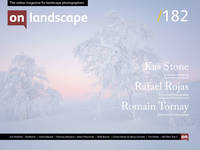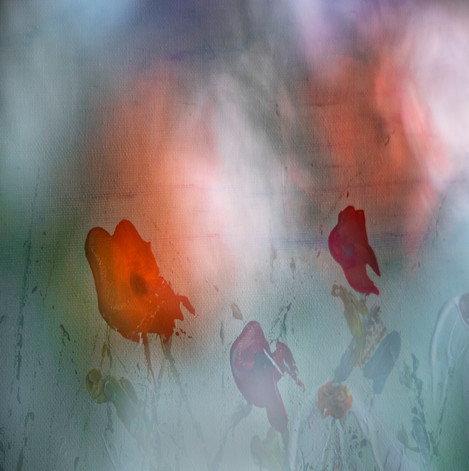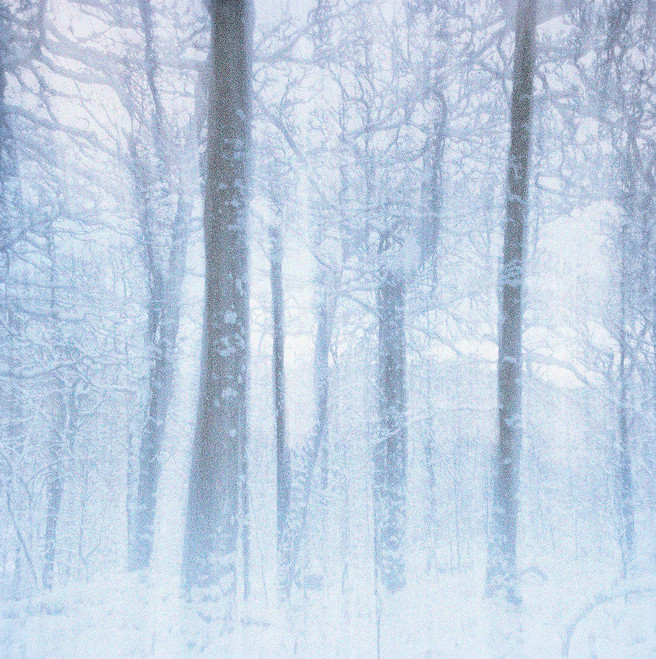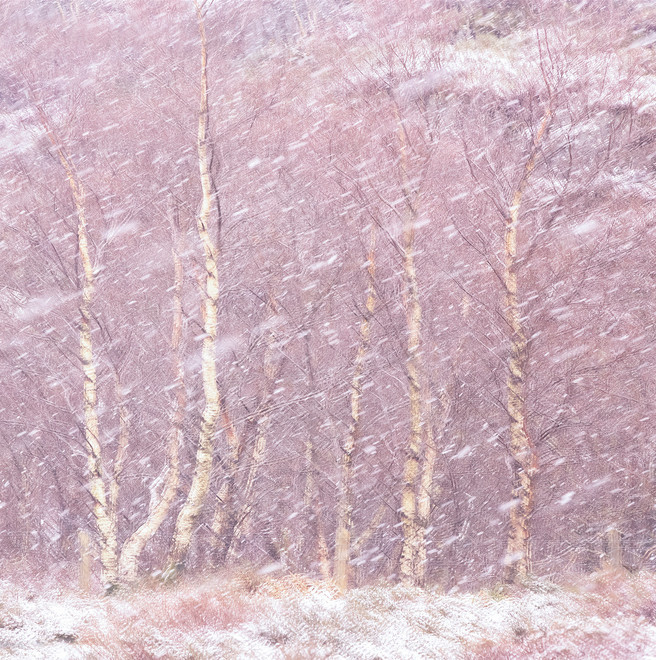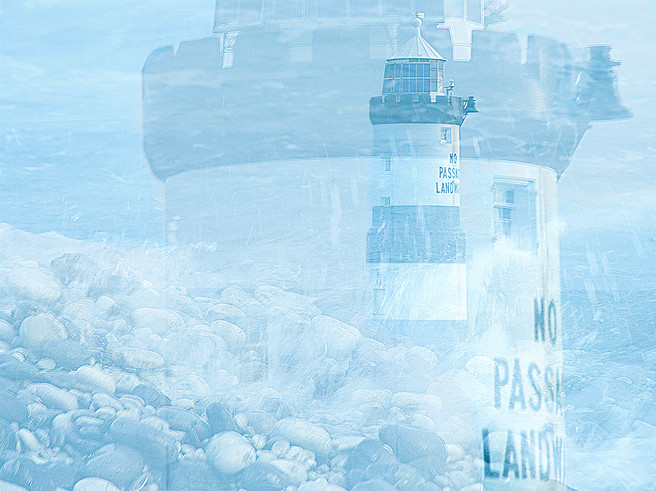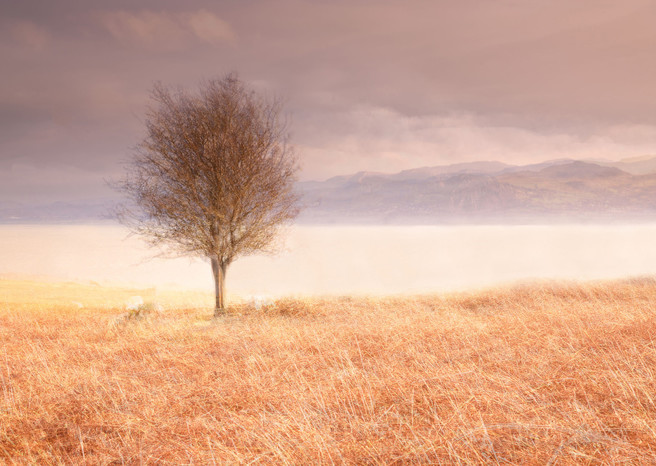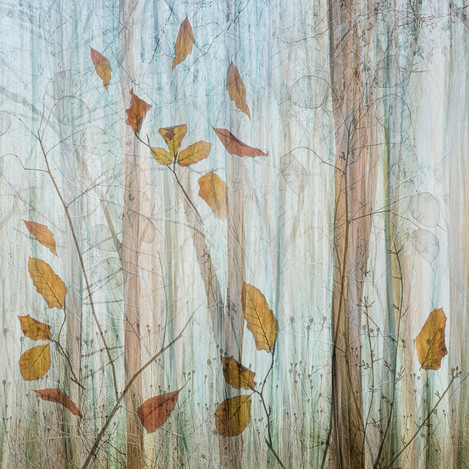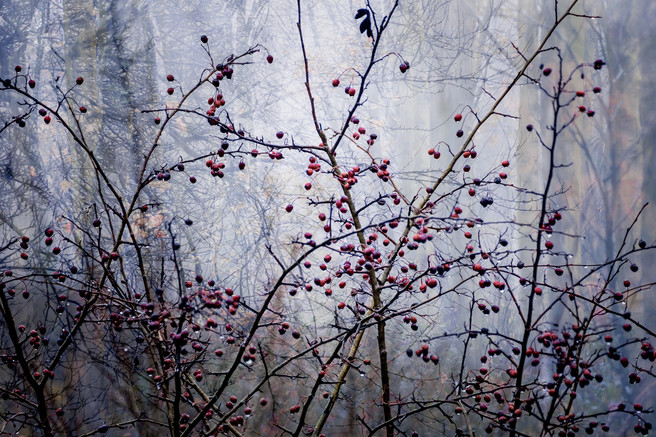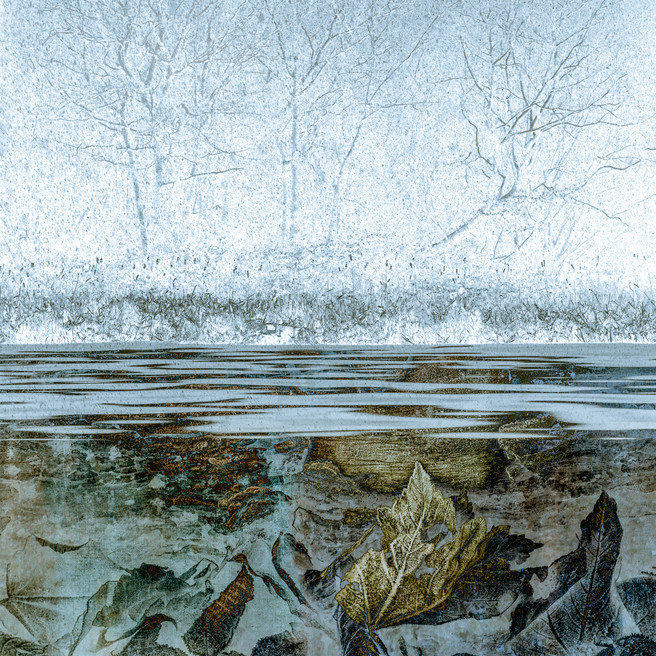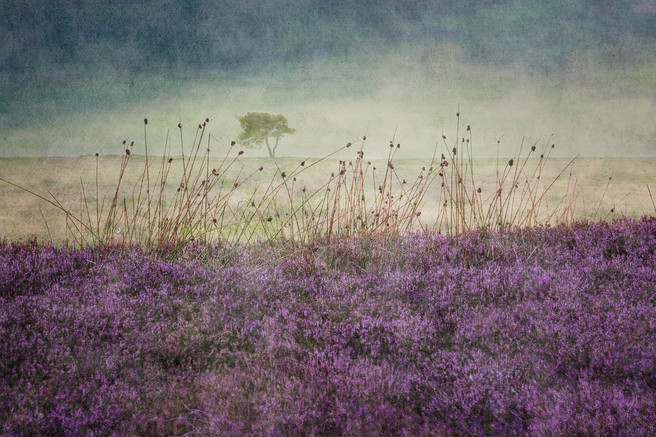Different approaches to image making

Cheryl Hamer
Photography is my passion. I turned pro 4 years ago and now run my own photography workshops company offering workshops at all levels here in North Wales, Iceland and the USA. I really enjoy teaching people - almost as much as making my own photos - I love those 'light bulb moments' when i can see that people have 'got it!

Glenys Garnett
I am a photographer and visual artist and use photography as my primary medium to realise my creative ideas around nature and the natural environment. I use a variety of in-camera techniques like ICM and multiple exposure, vintage lenses, scanning and wet mediums like cyanotype to incorporate into my work. My approach is to emphasise the beauty of subject matter through creative composition rather than document reality. I feel it is important to discover the beauty and diversity of nature around me so I work predominantly in my local environment.
Cheryl Hamer and Glenys Garnett are landscape photographers who ‘come at’ their landscapes from a slightly different perspective; here they explore both their differences and their similarities and how the march of technology continues to aid and abet their creativity.
They had both been aware of each other’s imagery for a long time and without realising it, both found each other’s work to be very inspiring. Glenys particularly liked and admired some of Cheryl’s work with ICM and Multiple Exposure techniques and Cheryl was increasingly drawn to Glenys’ great use of ‘textures’ and layering in photoshop. They both identified with each other’s very broad creative approach to photography and have now recognised that ultimately, although they may take different routes, for both of them it’s about communicating something ‘extraordinary in the ordinary’.
They started collaborating when a new Facebook group SheClicks was set up last year (2018), a forum for both amateur and professional women photographers to share and network. Cheryl approached Glenys with some ideas and they then set about developing possible ways of working together initially through social media and possibly to meet up in the future.
Glenys became particularly interested in the way that Cheryl almost exclusively produces her images in-camera whereas her own approach is to have an idea, go out and shoot a series of images and then combine them in software afterwards. This is mainly down to the fact that the Fuji XT2 only allows 2 exposures in-camera so she has been limited to some extent. Similarly, Cheryl began to play with textures and layering in photoshop – and so, in the eternal way of art, they have influenced and encouraged each other to play and develop and to further expand the way they see the world.
Cheryl Hamer
The wonderful world of landscape photography is continuing to grow and change and is comprised of more and more people who want to get more creative and make images that are different from ‘classic landscapes’ taken in the golden hours. There’s nothing at all wrong with classic landscapes of course, along with the rest of us, I have spent many happy hours planning shoots and then waiting for that light that we all love so much.
However, as I’ve said before in On Landscape, the discovery of the in-camera multiple exposure facility in my camera several years ago was an absolute revelation to me and has enabled me to take my photography in a different direction.
As a photography workshop and tour leader I am often asked questions like “how did you do that”, “you must have made that shot in photoshop”, or, “do you think it’s wrong to make creative landscape images in photoshop”?
The simple answer to that latter point is no, I don’t think it’s wrong – but I do think it’s important to be honest about how you make a shot.
I try to make most of my images in-camera, using that multiple exposure facility and often some intentional camera movement too. I do it that way because I get huge personal satisfaction from it; I love planning and pre-visualising how I might be able to make something work in-camera and then putting in the time trying to make that happen. I love the fact that I get a lot of dross! This kind of work is hugely experimental – you can have an idea of how to do it, but that doesn’t necessarily mean that it will work out first time. I love looking at the first try and thinking – ‘no, that isn’t quite right, why not, what do I need to change to make it look closer to what I have in my head?’ Then I try again – you have to have tenacity and a willingness to play and experiment to make this approach work – and being a child at heart, I do love to play!
There are two other key reasons why I love to work this way; firstly, I feel it helps me to strive to capture the real spirit and essence of a place, and secondly, I think it helps me to see the extraordinary in the ordinary. Hopefully, my images will help others to have some sense of those two things as well.
I think I can best explain what I mean by referring to two of my images below.
For whom the Bell Tolls
The first one is a collage of Penmon lighthouse which I call ‘For whom the Bell Tolls’. I made it this way because for me the essence of this place is the lighthouse completely surrounded by the sea, and with a white shingle bank off to one side. I love to just sit and gaze out to sea and listen – because that bell tolls away about every 30 seconds, warning shipping of just how dangerous this stretch of water can be; overlaying the bigger lighthouse has enabled me to draw attention to that bell, whilst at the same time showing the sea and shingle that are also such important elements of the place.
A Winter’s Dusk at One Tree Hill
I am also an old romantic (in its broadest sense) at heart, and in the second image – ‘A Winter’s Dusk at One Tree Hill’ – I have striven to express the romanticism of this place. That tree stands alone at the top of the hill and I can almost feel it gazing out to sea! Whilst it works very well as an ordinary shot, for me the addition of the impressionist feel reflects that atmosphere perfectly.
However, back to the thorny issue of just what we can achieve with Photoshop. You can of course create the same kind of images – which are often impressionist and/or abstract in mood – using photoshop. You can take a picture of a tree for example from lots of different angles, and then stack them up in different layers, alter the opacity of the layers, and in that way, create an impressionist image. Or you can create the same thing in camera.
Similarly, you can use some of the ever burgeoning ‘texture layers’ that are commercially available – and they can add a great ‘look’ to your original image.
In all honesty, I don’t think it matters which way you do it, as long as you’re clear about what you’ve done.
Let’s just cast our minds back over the history of art. Artists have been using different materials for centuries – and we don’t castigate them because they’re not all sticking to the same tried and tested materials, or brush strokes etc. Surely one of the ‘essences’ of art is that ability to see things differently, do them differently and embrace what the advancements of the day can bring us? Post processing software is simply part of that process and what a wonderful tool it is. I do think it’s important that when we are using it, we use images that we have taken ourselves, but with that proviso I see no conflict in using it to create something a bit different.
Glenys Garnett
I was born in Leeds and have lived in Wakefield, West Yorkshire, for over 30 years. My photography has evolved over a long period of time but I can’t remember when I didn’t have a camera at some point in my hand. I am now retired but have a career background in IT so I have always been interested in digital imaging ever since I first had a camera and of course, digital imaging software has been around a long time, so it is something I have always experimented with over the years.
I have a love of art and the environment and it seems a natural thing for me to use photography as a means to achieving my vision of the world around me. For some reason, and I can’t explain it, I have a desire to create, and my taste in art is quite eclectic, but I am particularly drawn to impressionism and cubist art and this has had a great influence on me and my work.
Most of us now use some sort of digital imaging device, like a camera or tablet and billions of images are being generated on a daily basis. There is a staggering and infinite array of subjects around us, and I feel it is important to look and see each moment and creation of an image as a unique piece of art. I firmly believe the camera is a tool, and for me, it is used as a painter uses brushes to paint a canvas.
It is important for me to feel the landscape I am in and create and develop images that are meaningful rather than wait for the right light to come along. It can be very liberating not to worry about whether the conditions are right or wrong for a particular location, and that leaves me free to experiment and create something evocative. The desire to say more about my environment and capture what some people would say is mundane and ordinary is important for me because it does represent the environment where I live.
The use of camera technology like ICM, multiple exposure and other creative techniques are not new to photography but they are increasingly being re-discovered and used by photographers to create a unique look to their images. There is often a randomness in some of these techniques that really appeals to me, the idea that you don’t always know what you are going to get. Often my images will contain a combination of ICM and Multiple Exposure and whilst I love making images this way in-camera, I find that there are just some things I cannot do without post processing. Some of my compositing is quite simple in technique in that it may consist of only a few layers combined occasionally using a texture, and the idea for some of these might come in the field depending on the conditions around me.
The use of Photoshop allows me to take my creativity one step further to produce composites and enhancements to my images often using multiple layers, blending modes, textures and techniques that are not available in-camera. I also make and use my own brushes for use in my images that I have captured in the field or by photographing botanical matter on a Lightpad. I will often get an idea for a creative image and set about finding and shooting images that will then be worked into a composite.
If I spend time in a place, I will often produce a composite image that for me encapsulates what I felt about the environment around me. It is no accident that trees feature heavily in my work, they are a dominant feature of our landscape and I am fascinated by them.
Lone Tree on Egton Moor
A good example of this is the Lone Tree on Egton Moor. I spent a few days on the North York Moors in the summer of 2017, in what turned out to be probably one of the best years I have seen for the heather. The image for me encapsulates not only the idea of the Lone Tree, ubiquitous in many landscape photographers’ portfolios but the swathe of pink heather in front representing the moors as they appeared to me at the time.
I think for most creative people it is about enjoying the process rather than the end result, and if I had one piece of advice to give to anyone who wants to be more creative with their photography it would be to learn your equipment inside out so that it doesn’t become a barrier to the creative process.
I think Cheryl and I both enjoy the process as much as the end result, and seeing the work that Cheryl does and understanding her techniques has made me think a little bit differently about exploring more in-camera methods. To this end, I purchased a second-hand Canon 70D which allows up to 9 exposures and I am going to start experimenting with this over the coming months. I don’t see this as a replacement to the way I work just an additional technique in my toolbox.
Every day I go out with my camera I feel like I am working with a blank canvas and feel there is an infinite number of possible ways to express myself. This is what I love about this wonderful art form.
So where does all that leave us?
I think it can be seen in this article that we both have a similar attitude and approach to photography and creating images. We both want to say something about the landscape and environment through our work. We may go about it in a different way, but ultimately, we both have a love of using the camera as a creative tool and feel it is important and a fundamental part for both of us in our creative process.
There is a sense that our work has influences in artistic styles and genres that we both try to encompass in our imagery, whether that is through the use of camera movement, multiple exposures made in-camera or in post-processing. There is no wrong or right way for either of us and we both try to encourage others to experiment, think creatively and consider different approaches to image making. So, however you want to make your images, please feel free to do it your way, but just be honest about how you’ve done it!
Articles on Multiple Exposure and ICM in Landscape Photography
- Multiple Exposure Photography
- Doug Chinnery Featured Photographer
- Creative Landscape Photography Webinar
- Intentional Camera Movement and Multiple Exposure Photography
- Creative Landscape Photography Webinar pt 1
- Doug Chinnery - Featured Photographer Revisited
- Doug Chinnery - lecture at Graham Cook Exhibition launch

